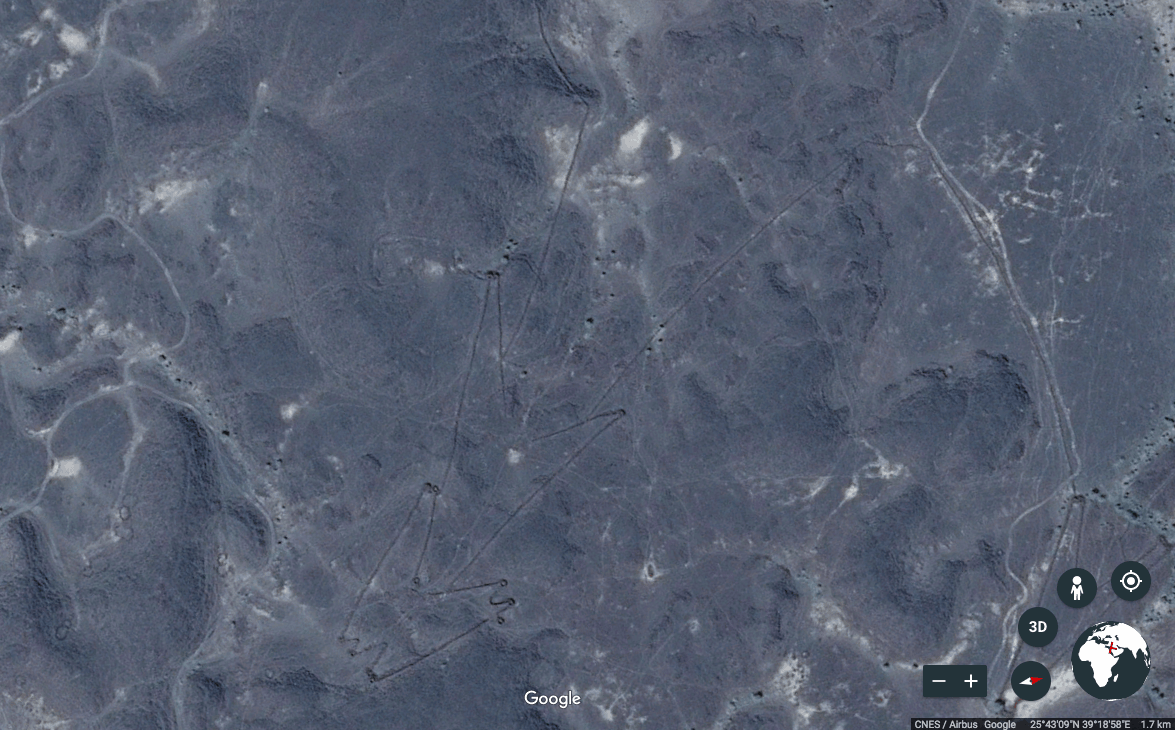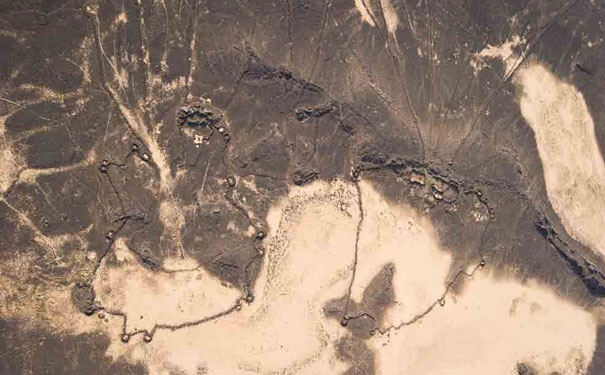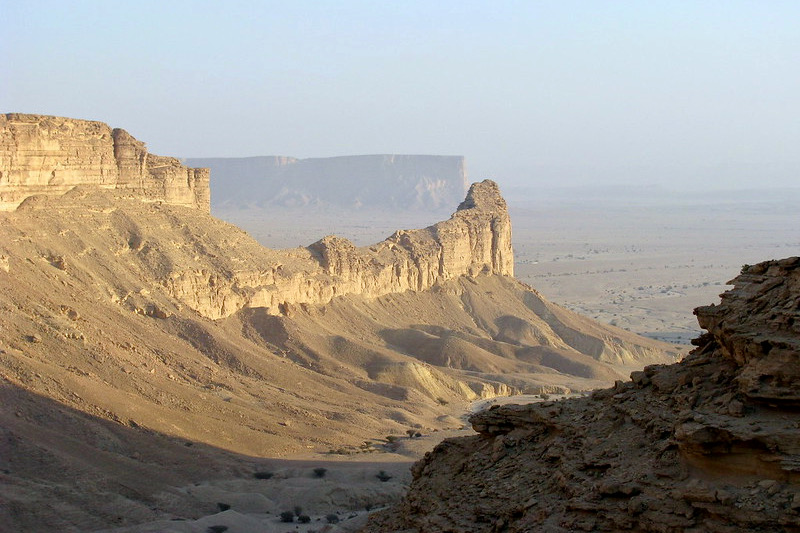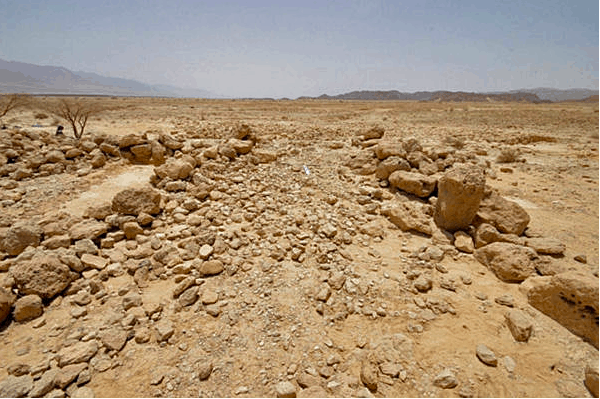SAUDI ARABIA
Kites of the Desert
By Nouf Aldossary
Riyadh, Saudi Arabia
Where would you go if you invented a time travel machine? In the desert of western Saudi Arabia, you can visit the past without leaving the present. There you’ll find a collection of ancient rock structures. Called “the works of old men” by native Bedouins, these geoglyphs (large designs on the ground) serve as reminders of mysterious yesteryears.
Formed by dry-stone walls, these designs are so huge that they can be seen only from a bird’s eye view. Although they’ve been around for millennia, it wasn’t until the 1920s that airplane pilots first brought these structures into public awareness. The recent availability of aerial photos through Google Earth has created renewed interest.
Two common motifs are a wheel and a kite. They are thought to date back as far as the Neolithic Era (approximately 15,200 to 2,000 BCE). Their age makes them hundreds of years older than the Nazca lines in Peru, which were formed by the removal of stones rather than the careful placement of them.
Why Kites?
We may know how old these desert kite structures are, but what purpose did they serve? A popular theory is that they played a role in hunting wild game, probably the extinct Persian gazelle. Because the tails of the kites can be several kilometers long, gradually narrowing into smaller triangular enclosures, scholars believe that the shapes at the end of the funnels could have trapped moving herds.
Interestingly, 95 percent of the kites found further north in Jordan narrow from southeast to northwest, which would have been the seasonal migration path for most animals. Some enclosures also had circular attachments several meters across called blinds that might have held hunters or their prey.

Historic Significance
An intriguing theory that explains why each kite had several blinds also highlights a turning point in human history. Possibly, the circular structures were pens for holding captured animals until the family needed to eat them. This imprisonment would mark the first step toward domesticating animals. Perhaps several families each had its own pen, signifying organized collaborative effort among a community that settled for a length of time in one location.
Counting Kites
The location of these kites across the Middle East is extensive. Numbering over 2,000, they can be found from northern Syria all the way through the Arabian peninsula to Yemen. One scholar who has studied those in Jordan estimated that their total length is 3,780 kilometers (2,849 miles), which adds up to half the stone volume of the Great Pyramid at Giza.
In Saudi Arabia, they are concentrated in the ancient lava-field region known as Harrat Khaybar, located in the western half of the country. Now an arid landscape of hardened basaltic lava, the wetter climate would have supported vegetation during the time of the kites’ construction.
Perhaps the stones formed a foundation for the insertion of poles and branches. The resulting fence could therefore have secured large animals using readily available materials.

Conservation
A fear among those who study these mysterious structures is that they will disappear before we can truly understand them. For example, comparing aerial photographs of the Jordanian landscape of the 1950s with the present day reveals that agricultural development has destroyed dozens of kites. As a result, scientists are working diligently to catalog as much information as possible.
New Discovery
In 2017, this research effort led to the discovery of an entirely new motif in the Harrat Khaybar, a long rectangle, called a gate. Totaling almost 400 in number and ranging from 13 meters to 518 meters long, these gates could be as old as 9,000 years. Although many details can be explored through Google Earth, archaeologists are going to need to examine them in the field in order fully to decipher their secrets.
Have a suggestion for this story? We’d love for you to submit it!


Blank
Blank
Math Resources
Learning Activity:
- Geometry (High School)
Sample Problems:
- If the number of kites in Jordan is 550, calculate how many of them are not oriented along previous animal migration paths. What is the average length of the walls in a kite? (See the story for clues.)
- Which measure of center would you choose (mean, median, or mode) to answer the following question: if the rectangular gates range from 13 meters to 518 meters long, and there are 394 of them, what is the average length (assuming a normal distribution)? What would cause the average to be lower or higher than your estimate?
- If each stone measures 15 centimeters, how many would have been needed to construct an average gate? In square meters, how much area is covered?
Extension Question
The age of these structures makes them an important part of human history. Yet they are so large and numerous that housing them in a museum would be impossible. What do you think is the best way to preserve them for us all to learn from and enjoy?
Explore Further
- Blog post about the kites by an archaeologist
- Ancient Origins webpage
- NASA satellite image of the Harrat Khaybar lava fields
- News story on the gates
Share Your Story
Write your own Global Math Story and send it to us!
Sorry, the comment form is closed at this time.